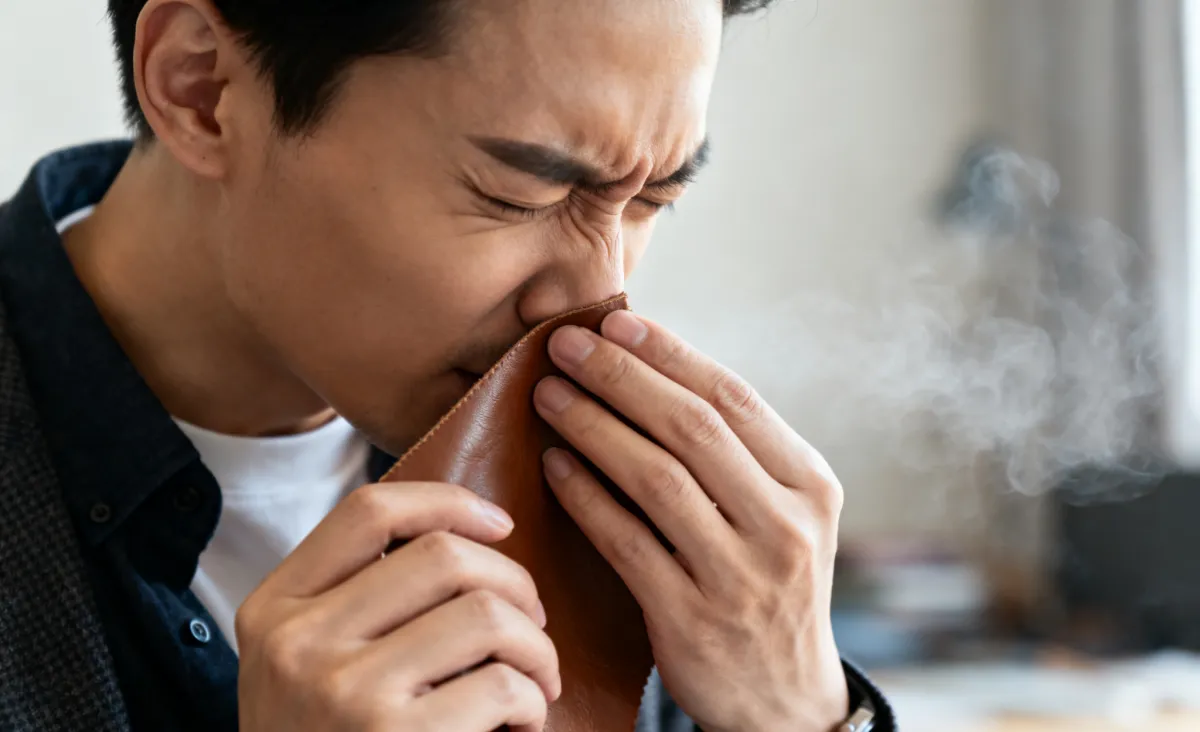Of all the hallmarks of a quality handbag—the impeccable stitching, the sturdy hardware, the supple feel—none is quite as evocative or immediate as its scent. A genuine leather bag announces itself with a rich, complex aroma that synthetic materials struggle to replicate. For any enthusiast or savvy shopper, understanding what does real leather smell like is a crucial skill. It’s the unseen signature of quality, and learning to recognize it is key to knowing how to identify real leather. This journey begins not with your eyes, but with your nose, by answering the fundamental question: what does real leather smell like?

So, what exactly is this famous smell? Describing a scent is challenging, but genuine leather consistently presents an earthy, organic, and slightly musky aroma. Many people compare it to the smell of a high-quality, old-fashioned leather-bound book or a well-worn leather jacket that has matured gracefully with age. It's a warm, dry, and subtly sweet or smoky scent, completely devoid of any chemical sharpness. This unique fragrance is a direct result of the tanning process, where raw animal hides are treated with natural tannins found in tree bark, plants, and other organic materials. These tannins interact with the hide's proteins, preserving it and imbuing it with that classic, beloved fragrance. When you're trying to how to identify real leather, taking a deep, deliberate sniff is your first and most telling test.

To fully appreciate the scent, it helps to understand its origin. The distinctive smell emerges from the fascinating transformation of raw hide into durable, beautiful leather. The two primary tanning methods create slightly different scent profiles, both of which are natural and complex:
In both cases, the finished product should smell natural and inviting. The absence of this warm, complex scent is a major red flag and a key differentiator in the real leather vs synthetic leather debate.

Now, let's contrast this with the smell of synthetic alternatives. When you're facing the common consumer dilemma of real leather vs synthetic leather, your nose can be your most reliable judge. Synthetic leather, also known as faux leather, pleather, or PU leather, is essentially plastic. It's made by coating a fabric base with polyurethane (PU) or polyvinyl chloride (PVC). Consequently, its smell is fundamentally chemical.
Upon opening a new synthetic bag, you are often greeted with a strong, pungent odor that can be described as plastic, vinyl, or reminiscent of a new shower curtain. It might have a sweet, artificial undertone that many find cloying and unpleasant. This is the smell of off-gassing chemicals from the manufacturing process. While this smell can fade over weeks or even months, it never truly transforms into the warm, organic scent of real leather. At best, it becomes odorless; at worst, it retains a faint, stale plastic smell, especially when warmed. Learning to spot this chemical signature is a powerful part of knowing how to identify real leather and avoiding disappointing purchases.

You don't need to be a master perfumer to learn this skill. Here is a practical, step-by-step guide to using scent for authentication:
This hands-on (or nose-on) approach is an invaluable and often overlooked part of the process for how to identify real leather. It complements visual and tactile checks perfectly, giving you greater confidence in your assessment.
While scent is a powerful indicator, true authentication requires a multi-sensory investigation. Let your nose lead the way, but always confirm your findings with your eyes and hands.
Integrating these sensory checks creates a complete picture, ensuring you're not fooled by a high-quality visual imitation in the ongoing challenge of real leather vs synthetic leather.
